
Primary goal of attending an international conference is to present a paper to the experts and influencers. It gives you a platform to exchange your interest-related thoughts, paving the way for possible future collaborations.

Use this platform to build connections with an elite group of wise men and women to enhance your intellect. Young entrepreneurs, this is a great platform to connect with your peers.

Knowledge is Power. Knowledge teaches skills. Skills define excellence. Use this platform to become cognizant of your interest area to achieve excellence in your domain.

Attending a conference give you opportunity to get your abstract or paper published in conference proceedings

Meet and greet a myriad of industry professionals and academia experts with common interest. Every meal will be an opportunity to meet and interact with fellow researchers, attendees and experts.

Expand your professional competency and learn useful tips and tricks of your industry in our skill-building workshops.

Explore insights on recent advancements, new equipment, new techniques, and unpublished data, learn from thought-leaders and get to network with a great line up of speakers.

Our exhibits floor offers the attendees with a dynamic display of the latest products with cutting-edge technology.

Investing in you is the best investment. Peers Alley conferences give the patrons with a feeling of the serendipity of real learning, skill development in strategic workshops, networking and start-up opportunities, thus, is value for money.

Attending the conference gives you much needed break from your regular duties. It also allows you to explore new cities, culture and meet new people. You will feel energized and rejuvenated to return to the university and continue with the job after attending the conference.
Conferences are vital forum for academic researchers and business leaders. "It involves multiple presentations, interactive breakout sessions, hands-on product demonstrations and unrivalled networking opportunities".
We have invited some of the world's most sought-after keynote speakers, experts, brand ambassadors, and industry leaders to share their thoughts and ideas with our conference guests.
Register Now
Structural biology research is rapidly growing, and new discoveries are being made at an accelerating pace. The global structural biology and molecular modeling market was valued at USD 2.62 billion in 2020 and is expected to reach USD 3.77 billion by 2025, growing at a compound annual growth rate (CAGR) of 7.5% during the forecast period.
The use of advanced computational techniques, such as machine learning and artificial intelligence, is enabling researchers to analyze complex biological data sets more quickly and accurately than ever before, leading to new insights into the structure and function of biomolecules.
Advances in imaging technologies, such as cryo-electron microscopy, have also revolutionized the field of Structural Biology, allowing researchers to visualize the structures of biological macromolecules in unprecedented detail.
The importance of Structural Biology and Biochemistry in drug discovery and development continues to grow, as researchers seek to identify new drug targets and develop more effective and targeted therapies for a wide range of diseases, including cancer, neurodegenerative disorders, and infectious diseases.
International Conferences on Structural Biology and Biochemistry play a crucial role in fostering collaboration and networking among researchers, scientists, and industry professionals, helping to drive innovation and advance the field.
about Adv. Structural BIO 2024 conference
Dear participants and esteemed guests,
It gives me great pleasure to extend a warm welcome to the Euro-Global Summit on Advances in Structural Biology and Protein Chemistry which will be held on June 20-21, 2024 Barcelona, Spain.
This conference will bring together leading minds from around the world to share their insights, ideas, and latest findings in molecular biology, structural biology and protein chemistry. It is a unique opportunity to exchange knowledge, explore the frontiers of science, and collaborate with colleagues who share a common passion for innovation and discovery.
Adv. Structural BIO 2024 scientific program consists of state-of-the-art lectures, debates, oral and poster presentations on protein chemistry and structural biology-related topics.
This event will bring together chemists, biotechnologists, structural biologists, molecular biologists, bioinformaticians, pharmaceutical researchers, mathematicians, biologists, computer scientists, statistical researchers, biomedical researchers, and health informaticians in a creative and engaging setting in Barcelona to learn and share their knowledge and views.
It'll be a memorable two-day congress packed with excellent presentations, educational sessions, and cutting-edge lectures from experts from all over the world.
We're looking forward to your participation and deliberation making this congress a roaring success
With best regards,
Adv. Structural BIO 2024
Organizing Committee
Peers Alley Media, Canada

Former Owner of the Advanced Materials Laboratory, Inc, USA

Jinan University, China

University Of Regensburg, Germany

St Francis College, USA
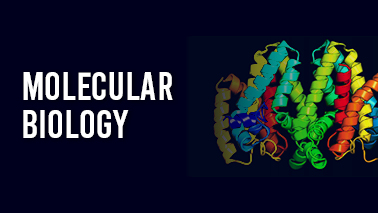
Molecular biology is the study of the chemical structures and processes of biological events involving molecules, the fundamental units of life. The study of nucleic acids (e.g., DNA and RNA) and proteins, which are crucial to life processes, as well as how these macromolecules interact and behave within cells, is the primary focus of molecular biology. Molecular biology originated from the allied sciences of biochemistry, genetics, and biophysics, with which it remains intimately tied today.
Researchers in molecular biology may also apply methodologies and techniques unique to genetics and other closely related sciences. Through techniques such as X-ray diffraction and electron microscopy, molecular biology specifically tries to comprehend the three-dimensional structure of biological macromolecules. Molecular biologists pinpoint the position of genes on particular chromosomes, connect these genes with specific characteristics of an organism, and employ genetic engineering (recombinant DNA technology) to isolate, sequence, and change individual genes.
Tags
Structural Biology Conferences
X-ray Crystallography Conferences
Molecular Biology Conferences 2024
Structural Bioinformatics Conferences
Protein Engineering Conferences
Proteomics Conferences 2024
Structural Genomics Conferences
cryo-EM Conferences 2024
Molecular Biology Conferences
Protein Engineering Conferences
Stereochemistry Conferences
Cell Signalling Conferences
Structural Biology Conferences 2024 Europe
Bioinformatics Conferences
Structural Biology Conferences 2024 USA
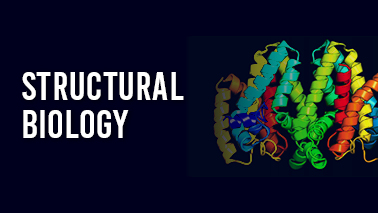
The study of the three-dimensional structure of biologically significant molecules and macromolecules, such as carbohydrates, proteins, and nucleic acids. The function of these molecules is largely determined by their 3D structures. By establishing their atomic structures, scientists can get important insights into how they operate and why mutations or deletions result in specific diseases.
Cryo-electron microscopy, or cryo-EM, is one of the most potent tool used by structural biologists to see cells and molecules in their natural condition down to the near-atomic or atomic level, or roughly 1/10,000th the breadth of a human hair.
X-ray crystallography is another technique utilised by structural biologists. This technique demands crystallisation of target molecules and proteins of interest prior to bombardment with X-ray beams; the resulting images allow scientists to investigate their structure in great detail. It can be used to view both small and large molecules.
Nuclear magnetic resonance (NMR) spectroscopy is a third important technique in structural biology; it is used to determine the structures of very tiny proteins. NMR detects the magnetic fields surrounding the nuclei of atoms, providing scientists with insight into the distinctive characteristics of individual molecules.
How may structural biology contribute to enhancing human health?
When a molecule, such as a protein, becomes distorted, it is unable to perform its function, which can lead to system failures. The consequence may be disease. By disclosing the appearance of these molecules, structural biologists can build blueprints that aid in the construction of new, more effective pharmaceuticals for treating diseases and conditions like as asthma, cancer, Parkinson's, and Alzheimer's.
Tags
Protein Engineering Conferences
Structural Biology Conferences 2024
Structural Bioinformatics Conferences
Computational Structural Biology Conferences
Protein Chemistry Conferences
Mass Spectrometry Conferences
Structural Biology Conferences
Proteomics Conferences 2024
cryo-EM Conferences 2024
Structural Biology Conferences 2024 Europe
Bioinformatics Conferences 2024
Proteomics Conferences
Genomics Conferences
NMR Spectroscopy Conferences
Cell Signalling Conferences

Folding and binding are fundamental processes in structural biology that are critical for understanding the structure, function, and behavior of biomolecules such as proteins, nucleic acids, and lipids.
Folding refers to the process by which a protein or other biomolecule assumes its native, three-dimensional structure. The folded structure of a protein is determined by its amino acid sequence and is essential for its function. Incorrect folding can lead to misfolded or partially folded proteins that can cause diseases such as Alzheimer's and Parkinson's.
Binding refers to the process by which two or more molecules come together to form a complex. In structural biology, binding is often studied to understand how proteins interact with other proteins, nucleic acids, or small molecules. Understanding the binding properties of a protein is important for drug discovery and the development of therapeutics.
In many cases, folding and binding are closely related processes. Proteins can fold into specific shapes that enable them to bind to other molecules, and the binding process can also induce structural changes in proteins. For example, the binding of a ligand to a protein can cause a conformational change that alters the protein's activity or function.
Structural biologists use a range of experimental and computational techniques to study folding and binding. These include X-ray crystallography, NMR spectroscopy, electron microscopy, mass spectrometry, and computational modeling. By understanding the folding and binding properties of biomolecules, researchers can gain insights into the structure and function of biological systems, and develop new treatments for diseases.
Tags
Computational Structural Biology Conferences 2024
Molecular Biology Conferences 2024
Proteomics Conferences
Bioinformatics Conferences
Computational Structural Biology Conferences
Protein Chemistry Conferences
Molecular Biology Conferences
Proteomics Conferences 2024
X-ray Crystallography Conferences
Mass Spectrometry Conferences
Structural Genomics Conferences
cryo-EM Conferences
Structural Biology Conferences 2024
Structural Bioinformatics Conferences
Genomics Conferences
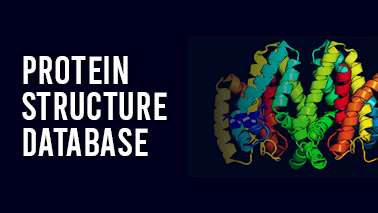
A protein structure database is a database in biology that is based on the numerous experimentally established protein structures. Most protein structure databases strive to organise and annotate protein structures in order to provide the biological community access to the experimental data in a useful way. Protein structure databases frequently contain three-dimensional coordinates as well as experimental information, such as unit cell diameters and angles for x-ray crystallography determined structures. Protein structure databases are crucial for many computational biology projects, such as structure-based drug design.
List of other protein structure databases:
• The Protein Data Bank (PDB)
• Database of Macromolecular Movements
• Dynameomics
• JenaLib
• ModBase
• OCA
• OPM
• PDB Lite
• PDBsum
• PDBTM
• PDBWiki
• ProtCID
• Protein
• Proteopedia
• ProteinLounge
• SCOP
• SWISS-MODEL Repository
• TOPSAN
Tags
Structural Bioinformatics Conferences
Structural Biology Conferences 2024 Europe
Protein Engineering Conferences
Bioinformatics Conferences 2024
Mass Spectrometry Conferences
Computational Structural Biology Conferences
Proteomics Conferences 2024
Cell Signalling Conferences
Structural Biology Conferences 2024
Genomics Conferences
cryo-EM Conferences 2024
Protein Chemistry Conferences
X-ray Crystallography Conferences
Protein Engineering Conferences
Proteomics Conferences
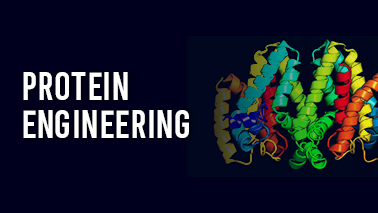
Protein engineering is the process of changing protein structures and assign them with new and/or desirable qualities in terms of activity, solubility, affinity, specificity, stability, resistance, and so on. De novo design, rational design, and direct evolution are the protein engineering methodologies that are most frequently used.
With the rapid growth of genome sequencing data, an increasing number of proteins have emerged with great research interest. Many efforts have been made toward the development of various methodologies that have proven efficient in the biophysical characterization of biomolecules in order to better understand their biological activities and pave the way for structure-function relationship investigations.
Tags
Computational Structural Biology Conferences
Structural Biology Conferences
NMR Spectroscopy Conferences
Structural Biology Conferences 2024
Structural Genomics Conferences
Bioinformatics Conferences 2024
Genomics Conferences
Protein Chemistry Conferences
Bioinformatics Conferences
Computational Structural Biology Conferences 2024
Mass Spectrometry Conferences
Proteomics Conferences 2024
Proteomics Conferences
Protein Engineering Conferences
cryo-EM Conferences 2024
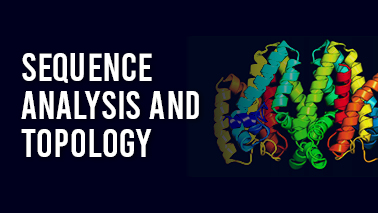
The topology of a protein structure is a highly simplified description of its fold that includes only the sequence of secondary structure elements and their approximate spatial positions and orientations. This information can be represented as a two-dimensional protein topological diagram known as a TOPS cartoon. These illustrations are helpful for comprehending specific folds and making similarities between folds.
Sequence analysis is an all-encompassing phrase for the computational examination of a DNA, RNA, or peptide sequence in order to extract information about its properties, biological function, structure, and evolution. To conduct efficient sequence analysis, it is necessary to first comprehend the origin of the data, i.e., the various experimental techniques utilised to determine the biological sequence. An important use of bioinformatics is sequence analysis. Several sequence alignment tools, such as BLAST and FASTA Clustal, can be used to examine single or multiple sequences for similarity and identity.
Tags
Structural Biology Conferences 2024 USA
Protein Engineering Conferences
Structural Genomics Conferences
Structural Bioinformatics Conferences
Proteomics Conferences
Computational Structural Biology Conferences
Structural Biology Conferences
Molecular Biology Conferences
cryo-EM Conferences
Computational Structural Biology Conferences 2024
Structural Biology Conferences 2024 Europe
Cell Signalling Conferences
Protein Engineering Conferences
Bioinformatics Conferences 2024
cryo-EM Conferences 2024
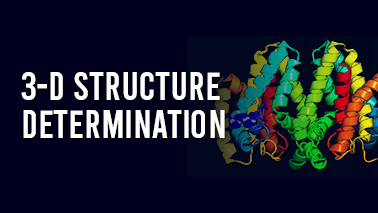
Determining the three-dimensional structure of molecules is an important aspect of modern science, especially in the fields of chemistry, biology, and material science. There are various methods used to determine the structure of molecules, including X-ray crystallography, nuclear magnetic resonance (NMR) spectroscopy, and electron microscopy.
X-ray crystallography is a powerful technique for determining the three-dimensional structure of molecules. In this method, the molecules are first crystallized, and then a beam of X-rays is directed at the crystal. The X-rays interact with the atoms in the crystal and diffract, producing a diffraction pattern. This diffraction pattern can be analyzed to determine the positions of the atoms in the molecule and thus the overall structure of the molecule.
NMR spectroscopy is another powerful method for determining the structure of molecules, especially for organic compounds. In this method, the molecule is placed in a strong magnetic field, and radio waves are applied to the sample. The response of the sample to the radio waves is then measured, and this information is used to determine the positions of the atoms in the molecule and their interactions with other atoms.
Electron microscopy is a method for determining the structure of large biological molecules, such as proteins and viruses. In this method, a sample is placed in a high vacuum and bombarded with a beam of electrons. The electrons interact with the sample, and the resulting images can be used to determine the overall structure of the molecule.
In summary, the determination of the three-dimensional structure of molecules is a crucial aspect of modern science, and various methods are used for this purpose, including X-ray crystallography, NMR spectroscopy, and electron microscopy.
Tags
Molecular Biology Conferences
Bioinformatics Conferences
cryo-EM Conferences
Proteomics Conferences
Structural Biology Conferences 2024
Structural Biology Conferences 2024 Europe
Structural Biology Conferences
Protein Engineering Conferences
Cell Signalling Conferences
Structural Bioinformatics Conferences
Molecular Biology Conferences 2024
NMR Spectroscopy Conferences
Protein Engineering Conferences
Mass Spectrometry Conferences
Bioinformatics Conferences 2024
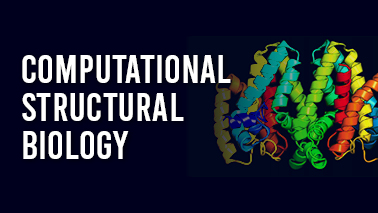
The field of computational biology has made significant progress.
It focuses on the influence of computational structural biology on protein structure prediction tools, macromolecular function and protein design, and drug discovery techniques.
The availability of vast and heterogeneous data is rising, and computational biology can integrate, assess, and interpret these different information-rich resources effectively. Using vast genomic, transcriptomic, and proteomic data, as well as structural foot printing, computational biology has made significant steps toward more accurate multistate biological modelling. Moreover, it has developed algorithms for predicting molecular interactions and arranging them into interconnected biological pathways.
Based on the goals and types of experimental data that are available, computational biology covers a wide range of topics, such as sequence and structure analysis and how they relate to function, evolution and population genomics, regulatory and metabolic networks, image analysis, and disease. Computational biology often solves problems by analysing huge amounts of genomic, proteomic, microarray, cell and tissue imaging, and clinical data to find significant statistical trends and link them to results. It uses high-throughput genomic and proteomic methods to combine data, find and validate biomarkers and possible treatment targets, and get results quickly into the clinic.
Tags
Proteomics Conferences
Cell Signalling Conferences
Protein Engineering Conferences
Molecular Biology Conferences
NMR Spectroscopy Conferences
Computational Structural Biology Conferences 2024
X-ray Crystallography Conferences
Structural Bioinformatics Conferences
Bioinformatics Conferences
Structural Biology Conferences 2024 USA
Computational Structural Biology Conferences
Genomics Conferences
Mass Spectrometry Conferences
Protein Engineering Conferences
Structural Genomics Conferences
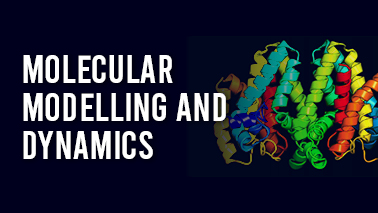
Molecular modelling is a combined term for theoretical and computational techniques used to simulate or model the behaviour of molecules.
The structure, dynamics, and thermodynamics of inorganic, biological, and polymeric systems are now frequently investigated using molecular modelling methods. Protein folding, enzyme catalysis, protein stability, conformational changes related with biomolecular function, and molecular recognition of proteins, DNA, and membrane complexes are some of the forms of biological activity that have been examined using molecular modelling.
Popular software for molecular modelling:
• Agile Molecule
• BALLView
• Cerius2
• GAUSSIAN
• Ghemical
• GROMOS
• InsightII
• MarvinSpace
• MMTK
• MOE
• Molsoft ICM
• NOCH
• Oscail X
• PyMOL
• Sirius
• SPARTAN
• Sybyl
• VMD
There are four primary types of molecular models: skeletal or line; stick; ball-and-stick; and space-filled or CPK.
Molecular dynamics (MD) is a computer simulation technique for investigating the atomic and molecular motions. Atoms and molecules are allowed to interact over a predetermined amount of time, revealing the system's dynamic "evolution." In the most prevalent model, the trajectories of atoms and molecules are determined by numerically solving Newton's equations of motion for a system of interacting particles, where forces between the particles and their potential energies are typically calculated using interatomic potentials or molecular mechanical force fields.
Because molecular systems often consist of a large number of particles, it is impractical to analyse their properties; Molecular Dynamics simulation circumvents this issue by using numerical approaches.
Tags
NMR Spectroscopy Conferences
Stereochemistry Conferences
Mass Spectrometry Conferences
cryo-EM Conferences 2024
Structural Biology Conferences 2024 USA
X-ray Crystallography Conferences
Structural Biology Conferences 2024
Computational Structural Biology Conferences
Structural Bioinformatics Conferences
Genomics Conferences
Protein Engineering Conferences
Structural Biology Conferences 2024 Europe
Structural Biology Conferences
Bioinformatics Conferences
Bioinformatics Conferences 2024
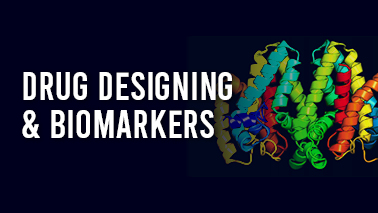
Drug design, often known as rational drug design or rational design, is the creative process of discovering new medications based on understanding of a biological target. Typically, the medicine is a tiny organic molecule that activates or inhibits the action of a biomolecule, such as a protein, resulting in a therapeutic benefit for the patient. Drug design commonly but not necessarily relies on computer modelling approaches. This form of modelling is also known as computer-aided drug design. Secondly, drug design that relies on the three-dimensional structure of the bimolecular target is called structure-based drug design. In addition to small molecules, biopharmaceuticals such as peptides and therapeutic antibodies are becoming an increasingly important class of medications. Computational approaches have also been created for the purpose of improving the affinity, selectivity, and stability of protein-based treatments.
A biological molecule found in blood, other body fluids, or body tissues that is a sign of a normal or abnormal condition, or a disease. A biomarker can be used to see how well a treatment for a disease or condition works on the body.
A good biomarker has certain qualities that make it a good choice for checking on a certain disease. In an ideal world, a marker should have the following:
• Safe and easy to measure
• It doesn't cost much to follow up.
• Changeable based on treatment
• Consistent no matter what gender or race you are
Serious diseases like diabetes and cardiovascular disease can be predicted with the help of biomarkers.
For the purpose of cancer detection, screening, diagnosis, treatment, and monitoring, the principles of biomarkers will be employed.
Tags
Protein Engineering Conferences
Molecular Biology Conferences 2024
Molecular Biology Conferences
Mass Spectrometry Conferences
Cell Signalling Conferences
Proteomics Conferences 2024
Structural Biology Conferences 2024 USA
X-ray Crystallography Conferences
Structural Bioinformatics Conferences
Bioinformatics Conferences 2024
Protein Chemistry Conferences
Genomics Conferences
cryo-EM Conferences 2024
Structural Biology Conferences 2024 Europe
Structural Biology Conferences 2024
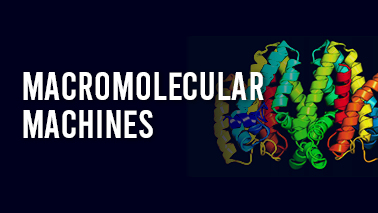
Macromolecular machines are assemblies with several active sites that facilitate the co-localization and/or coupling of enzymatic activities. Multi-enzyme complexes are a form of macromolecular machine that catalyses sequential chemical processes and is used by many metabolic pathways. For example, yeast fatty acid synthase, is a huge 2 MDa macromolecular machine that assembles into a barrel-shaped particle to enable synthesis via a series of repeated processes. The formation of macromolecular assemblies can be advantageous for metabolic pathways because they can boost catalytic efficiency, safeguard intermediates, and give a high level of control. Ribosome synthesis is a key biological pathway that is dependent on a number of macromolecular machines.
Tags
Mass Spectrometry Conferences
Genomics Conferences
Structural Biology Conferences 2024
Structural Genomics Conferences
NMR Spectroscopy Conferences
Protein Engineering Conferences
Bioinformatics Conferences
Cell Signalling Conferences
Structural Bioinformatics Conferences
X-ray Crystallography Conferences
Proteomics Conferences 2024
Stereochemistry Conferences
cryo-EM Conferences 2024
Structural Biology Conferences 2024 Europe
Bioinformatics Conferences 2024
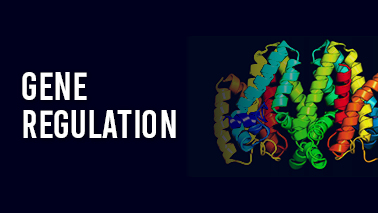
Gene regulation is the process that regulates the timing, location, and quantity of gene expression. The process is carried out by a variety of mechanisms, such as regulatory proteins and chemical DNA alteration. Gene regulation is crucial to an organism's ability to respond to environmental changes.
Gene regulation. A significant amount of the cell's energy is spent to gene regulation, which is one of the cell's fundamental mechanisms for producing the transcripts that will eventually become proteins. It is also likely that a significant portion of the cell's genome is devoted to regulation, allowing for the fine-tuning of a cell's response to stress, organism development, or repair.
Tags
Molecular Biology Conferences
Bioinformatics Conferences
cryo-EM Conferences
Genomics Conferences
Protein Engineering Conferences
Structural Biology Conferences 2024 USA
Mass Spectrometry Conferences
Proteomics Conferences
cryo-EM Conferences 2024
Molecular Biology Conferences 2024
Structural Bioinformatics Conferences
Structural Biology Conferences
Structural Biology Conferences 2024 Europe
Computational Structural Biology Conferences
Proteomics Conferences 2024
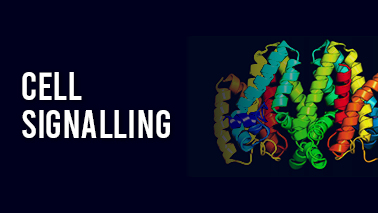
Cell signalling is the mechanism through which cells communicate with other cells within the body or with the external environment. The majority of signalling molecules are chemical substances, including as hormones, neurotransmitters, and growth factors, which bind to a specific protein receptor (signalling molecule) on or within a cell. The signals are then transmitted from one molecule to the next within the cell, resulting in a particular cell response, such as cell division or cell death. Muscle cells and nerve cells, for instance, work together to facilitate movement. Signalling is essential for appropriate cell growth and function. Cells with abnormal signalling molecules may transform into cancer cells. Also known as signal transmission.
Phases of Cell Signalling:
Cell signalling occurs in the following three phases:
• Signal molecule binding to the receptor.
• Signal transduction involves the activation of enzymes by chemical signals.
• Ultimately, a response is detected
Tags
Structural Biology Conferences 2024 Europe
Molecular Biology Conferences 2024
Molecular Biology Conferences
Computational Structural Biology Conferences
NMR Spectroscopy Conferences
X-ray Crystallography Conferences
Computational Structural Biology Conferences 2024
Protein Chemistry Conferences
Structural Genomics Conferences
cryo-EM Conferences
Protein Engineering Conferences
Proteomics Conferences 2024
Structural Biology Conferences 2024 USA
Bioinformatics Conferences 2024
Protein Engineering Conferences
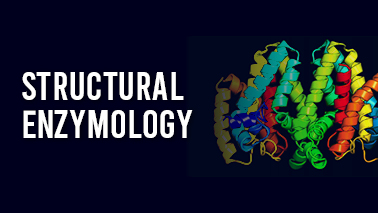
Structural enzymology is a field of study that focuses on the three-dimensional structure of enzymes and their interactions with substrates and other molecules. Enzymes are proteins that catalyze chemical reactions in biological systems, and their activity is highly dependent on their structure. Therefore, understanding the structure of enzymes can provide valuable insights into their function, regulation, and mechanisms of action.
Structural enzymology involves the use of various techniques, such as X-ray crystallography, NMR spectroscopy, and cryo-electron microscopy, to determine the atomic-level structures of enzymes and their complexes with substrates and other molecules. By analyzing these structures, researchers can identify the key amino acid residues and functional groups that are involved in enzyme catalysis and understand how enzymes recognize and bind to their substrates.
The information obtained from structural enzymology studies can also be used to design new drugs and inhibitors that target specific enzymes. For example, if a key amino acid residue involved in enzyme catalysis is identified, inhibitors can be designed to bind specifically to that residue and block enzyme activity. Structural enzymology is therefore a valuable tool for drug discovery and development.
In summary, structural enzymology is a field of study that uses various techniques to determine the three-dimensional structures of enzymes and their interactions with substrates and other molecules. This information can provide valuable insights into enzyme function and regulation, as well as be used to design new drugs and inhibitors.
Tags
X-ray Crystallography Conferences
Structural Biology Conferences
Structural Biology Conferences 2024 Europe
Structural Genomics Conferences
Bioinformatics Conferences
Bioinformatics Conferences 2024
Mass Spectrometry Conferences
cryo-EM Conferences
Structural Biology Conferences 2024
Stereochemistry Conferences
Protein Engineering Conferences
Protein Chemistry Conferences
Proteomics Conferences
NMR Spectroscopy Conferences
Computational Structural Biology Conferences 2024
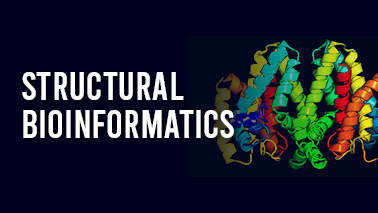
Structural bioinformatics is a subject of bioinformatics dealing with the three-dimensional study and prediction of biological macromolecules like proteins, RNA, and DNA. It uses both empirically solved structures and computer models to generalise macromolecular 3D structures, such as comparisons of overall folds and local motifs, molecular folding principles, evolution, binding interactions, and structure/function correlations. The primary objective of structural bioinformatics is to provide novel methods for analysing biological macromolecular data in order to solve biological problems and discover new information.
Tags
Bioinformatics Conferences 2024
Genomics Conferences
Structural Biology Conferences 2024
Bioinformatics Conferences
Cell Signalling Conferences
Structural Bioinformatics Conferences
cryo-EM Conferences
NMR Spectroscopy Conferences
Structural Biology Conferences 2024 USA
Protein Engineering Conferences
Molecular Biology Conferences 2024
Computational Structural Biology Conferences 2024
Structural Genomics Conferences
Proteomics Conferences
cryo-EM Conferences 2024
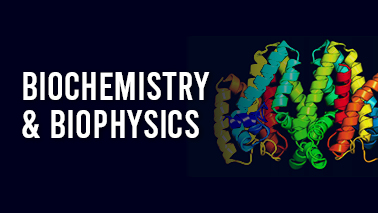
Biochemistry is the study of the chemical processes occurring at the molecular level within living organisms, from the interaction of small molecule medications with giant macrobiomolecules such as protein complexes to the cascading dynamics of regulatory signalling molecules within and between cells.
All chemical reactions that occur within an organism, such as the breakdown of substances to provide energy or the synthesis of complex molecules required for life functions, are referred to as metabolism. These chemical changes depend on the action of organic catalysts known as enzymes, which in turn depend on the genetic system of the cell for their existence. Therefore, it is not surprising that biochemistry is used to the study of chemical changes in disease, drug action, and other aspects of medicine, as well as in nutrition, genetics, and agriculture.
Carbohydrates, lipids, proteins, and nucleic acids are the four fundamental biomolecules, and they regularly combine to form polymers and repeating units with additional functional qualities that define living systems.
Biophysics is the branch of science that applies the principles of physics and chemistry, as well as mathematical analysis and computer modelling, to biological systems with the ultimate goal of comprehending the structure, dynamics, interactions, and ultimately the function of biological systems on a fundamental level. The objective of biophysics is to explain biological function in terms of the physical properties of particular molecules. These molecules range in size from tiny fatty acids and sugars (1 nm = 10–9 m) to macromolecules such as proteins (5–10 nm), starches (>1000 nm), and the massively elongated DNA molecules (over 10,000,000 nm = 1 cm long and barely 20 nm wide). These basic components of living beings assemble into cells, tissues, and entire organisms by producing separate structures with dimensions of at least 10, 100, 1000, and 10,000 nanometers. Thus, proteins assemble into the casein micelles of milk, which aggregate to form cheese curd; proteins and ribonucleic acids assemble into ribosomes, the machinery for protein synthesis; lipids and proteins assemble into cell membranes, the external barriers and internal surfaces of cells; and proteins and DNA assemble into chromosomes, the carriers of the genetic code.
Biophysicists work to create strategies for curing disease, eradicating world hunger, producing renewable energy sources, designing cutting-edge technology, and solve countless scientific mysteries. In conclusion, biophysicists are at the forefront of solving both age-old human problems as well as problems of the future.
What Do Biophysicists Do?
Data Analysis and Structure: The DNA sequences of thousands of human and other organisms can now be read. The study of such massive datasets also requires the use of biophysical methods.
Computer Modelling: Biophysicists utilise computer modelling to observe and modify the shapes and structures of proteins, viruses, and other complex molecules, which is essential for developing new drug targets or understanding how proteins mutate and create tumours.
Molecules in Motion: Biophysicists investigate how hormones flow throughout the cell and how cells communicate. Using fluorescent tags, biophysicists have been able to make cells glow like fireflies under a microscope and study the complex internal transit system of the cell.
Bioengineering, Nanotechnologies, Biomaterials: Biophysics has also been essential for comprehending biomechanics and utilising this knowledge to the building of better prosthetic limbs and nanomaterials for improved drug delivery.
Imaging: Biophysicists invented MRIs, CT scans, and PET scans. Biophysics is vital to the development of safer, faster, and more precise medical imaging equipment to better understand the body.
Medical Applications: Biophysics has proven crucial to the invention of numerous life-saving therapies and equipment, such as dialysis, radiation therapy, cardiac defibrillators, pacemakers, and artificial heart valves.
Tags
Structural Genomics Conferences
Protein Chemistry Conferences
Molecular Biology Conferences 2024
Proteomics Conferences
Bioinformatics Conferences
Protein Engineering Conferences
Structural Biology Conferences 2024
cryo-EM Conferences 2024
Computational Structural Biology Conferences
Mass Spectrometry Conferences
cryo-EM Conferences
Proteomics Conferences 2024
Stereochemistry Conferences
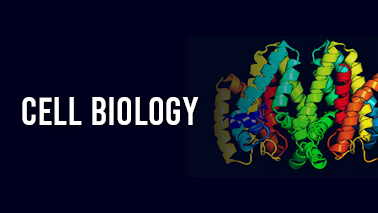
The objective of cell biology is to understand the structure and physiological function of individual cells, how they interact with their environment, and how huge numbers of cells work together to produce tissues and organisms. As such, cell biology lies at the centre of all biological sciences and is essential to comprehending the progression of human diseases. Cells are the fundamental building blocks of all living things, including humans, animals, and plants. Cell biologists seek an understanding of how cells function by studying the machinery inside of them, looking into how cells communicate with one another, and determine how they form larger structures.
Cell biology is divided into various subtopics, such as cell metabolism, cell communication, cell cycle, and cell composition. Cell biology research is interconnected with genetics, biochemistry, neuroscience, plant biology, molecular biology, microbiology, and immunology.
Tags
Structural Biology Conferences 2024 Europe
Molecular Biology Conferences 2024
X-ray Crystallography Conferences
Computational Structural Biology Conferences
Protein Engineering Conferences
Protein Engineering Conferences
Stereochemistry Conferences
Bioinformatics Conferences 2024
Mass Spectrometry Conferences
cryo-EM Conferences
Structural Biology Conferences 2024
Structural Genomics Conferences
NMR Spectroscopy Conferences
Proteomics Conferences 2024
Cell Signalling Conferences
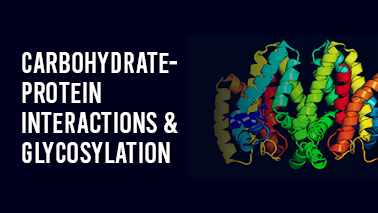
Oligosaccharides expressed on the surface of cells and in biological fluids as glycoproteins, glycolipids, proteoglycans, and polysaccharides can be recognised by partner proteins, and these interactions have been shown to mediate fundamental biological events such as the immune response, signal transduction, development, and cancer metastasis.
The specificities of these partner proteins (lectins) for their glycan ligands are dictated by glycan composition, shape and density of expression, and the participation of the aglycone moiety in the recognition motif. As additional secondary binding sites continue to be identified, our understanding of the functionality of sugar-binding proteins increases. This issue focuses on recent advances in understanding how C-type lectins in the immune system function, how novel motifs involving asymmetric glycan branch recognition and protein-protein interactions influence critical biological functions such as signal transduction and bactericidal pore formation, as well as recent studies on novel glycan-binding proteins produced by bacteriophage, analysis of the interactions between heparin/heparan sulphate and their binding proteins, and , recent discoveries about the molecular interactions between chondroitin-dermatan sulphate and other bioactive protein components.
Tags
Mass Spectrometry Conferences
Structural Bioinformatics Conferences
Molecular Biology Conferences
Molecular Biology Conferences 2024
Bioinformatics Conferences 2024
Structural Biology Conferences 2024 USA
X-ray Crystallography Conferences
Stereochemistry Conferences
Proteomics Conferences
Computational Structural Biology Conferences 2024
Structural Biology Conferences 2024 Europe
Structural Biology Conferences
Genomics Conferences
Bioinformatics Conferences
NMR Spectroscopy Conferences
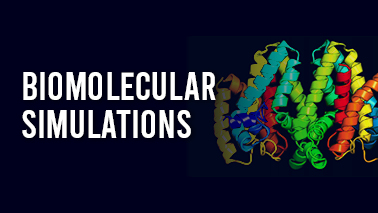
Biomolecular simulations are computer-based methods that allow scientists to simulate the behavior of molecules such as proteins, nucleic acids, and other biological macromolecules at the molecular and atomic level. These simulations can provide valuable insights into the structural, dynamic, and functional properties of biomolecules, which are essential for understanding biological processes at the molecular level.
There are two main types of biomolecular simulations: molecular dynamics (MD) simulations and Monte Carlo simulations. In molecular dynamics simulations, the time evolution of a molecular system is modeled as the movement of individual atoms and molecules in response to forces and interactions. Monte Carlo simulations, on the other hand, sample the conformational space of a molecular system by randomly changing its conformation and calculating the energy of each state.
Biomolecular simulations can provide a range of information about biological macromolecules, including their structure, stability, flexibility, and function. For example, MD simulations can be used to model the conformational changes that occur in a protein when it binds to a ligand, while Monte Carlo simulations can be used to predict the thermodynamic properties of a protein or nucleic acid.
Biomolecular simulations are an important tool in structural biology, drug design, and biotechnology. They can be used to understand the molecular mechanisms of diseases, to design new drugs and therapeutic agents, and to engineer new biomolecules with specific properties. However, it's important to note that simulations are not perfect and require validation with experimental data to ensure that the predictions are accurate.
Tags
Structural Genomics Conferences
Molecular Biology Conferences 2024
Bioinformatics Conferences 2024
Cell Signalling Conferences
NMR Spectroscopy Conferences
Protein Engineering Conferences
Stereochemistry Conferences
Protein Chemistry Conferences
Structural Bioinformatics Conferences
Computational Structural Biology Conferences 2024
Structural Biology Conferences 2024 USA
Proteomics Conferences 2024

Proteome is the collection of proteins in your body, and proteomics is the study of proteins. After the completion of the Human Genome project, this subject is regarded as one of the major frontiers in biology and personalised medicine.
Proteomics is the application of technology for identifying and quantifying the total protein composition of a cell, tissue, or organism. It supplements other "omics" technologies, including as genomics and transcriptomics, in order to expose the identification of protein of an organism and the structure and activities of a specific protein.
Proteomics-based technologies are utilised in various capacities for various research settings, such as the detection of various diagnostic markers, candidates for vaccine production, the understanding of pathogenicity mechanisms, the modification of expression patterns in response to various signals, and the interpretation of functional protein pathways associated with various diseases. Proteomics is complex since it involves the analysis and classification of overall protein signatures of a genome. Mass spectrometry, with LC–MS-MS and MALDI-TOF/TOF as extensively used instruments, is the central among modern proteomics.
Genomics is the study of all of a person's genes (the genome), including interactions of those genes with each other and with the person's environment.
Genomics is the study of organisms' whole genomes. It uses some ideas from genetics. Genomics uses recombinant DNA, DNA sequencing methods, and bioinformatics to sequence, assemble, and study analyse the structure and function of genomes.
Furthermore, genomics focuses on interactions within the genome between loci and alleles, as well as additional interactions such as epistasis, pleiotropy, and heterosis. Genomics takes advantage of the availability of whole DNA sequences for entire organisms, which was made possible by both Fred Sanger's pioneering work and the more recent next-generation sequencing technology. Next-generation sequencing technologies have resulted in dramatic increases in genome sequencing speed, capacity, and affordability. Furthermore, breakthroughs in bioinformatics have permitted the creation of hundreds of life-science databases and programs that promote scientific research.
Tags
Protein Engineering Conferences
Cell Signalling Conferences
NMR Spectroscopy Conferences
Protein Chemistry Conferences
Bioinformatics Conferences 2024
Proteomics Conferences
Structural Genomics Conferences
Stereochemistry Conferences
Molecular Biology Conferences
Computational Structural Biology Conferences 2024
Structural Biology Conferences 2024 Europe
cryo-EM Conferences
Genomics Conferences
Proteomics Conferences 2024
Computational Structural Biology Conferences
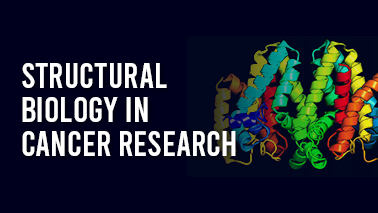
Structural biology plays an important role in cancer research, as it provides a way to understand the molecular mechanisms underlying the development and progression of cancer. By determining the three-dimensional structures of proteins involved in cancer, researchers can identify potential targets for drug development and design more effective therapies.
One of the key areas of research in structural biology is the study of proteins involved in signaling pathways that regulate cell growth, division, and survival. In cancer, these pathways are often disrupted, leading to uncontrolled cell growth and proliferation. By determining the structures of proteins involved in these pathways, such as receptor tyrosine kinases and their downstream effectors, researchers can identify potential drug targets and design inhibitors that can block their activity and prevent the growth and survival of cancer cells.
Structural biology is also important for understanding the mechanisms of drug resistance in cancer. Many cancer cells are able to develop resistance to chemotherapy and targeted therapies over time, often through mutations in key proteins. By determining the structures of these mutated proteins, researchers can identify the molecular changes that lead to resistance and design more effective therapies that can overcome these mutations.
Furthermore, structural biology techniques such as X-ray crystallography and cryo-electron microscopy can be used to study the structures of large protein complexes, such as the ribosome and the proteasome, which play important roles in cancer development and progression. By understanding the structures and mechanisms of these complexes, researchers can identify potential targets for drug development and design more effective therapies.
In summary, structural biology is a valuable tool in cancer research, as it provides insights into the molecular mechanisms underlying cancer development and progression. By determining the structures of proteins involved in cancer signaling pathways, drug resistance, and large protein complexes, researchers can identify potential drug targets and design more effective therapies for the treatment of cancer.
Tags
Structural Biology Conferences 2024 USA
cryo-EM Conferences
Protein Engineering Conferences
Bioinformatics Conferences
Stereochemistry Conferences
NMR Spectroscopy Conferences
X-ray Crystallography Conferences
Computational Structural Biology Conferences 2024
Computational Structural Biology Conferences
Structural Biology Conferences
Cell Signalling Conferences
Genomics Conferences
Molecular Biology Conferences 2024
Bioinformatics Conferences 2024
Molecular Biology Conferences
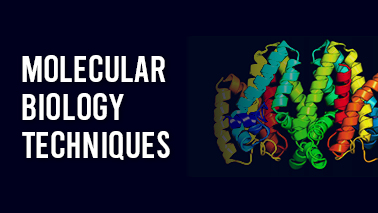
Molecular biology techniques are a set of laboratory techniques used to study the molecular basis of biological processes. These techniques are used to isolate, manipulate, and analyze DNA, RNA, and proteins, and to understand their functions and interactions.
Some of the commonly used molecular biology techniques include:
Polymerase Chain Reaction (PCR): PCR is a technique used to amplify specific regions of DNA. It involves the use of a DNA polymerase enzyme and specific primers that bind to the DNA sequence of interest. By repeating cycles of denaturation, annealing, and extension, millions of copies of the target DNA can be produced.
Gel Electrophoresis: Gel electrophoresis is a technique used to separate DNA, RNA, or proteins based on their size and charge. Samples are loaded onto a gel matrix, and an electric current is applied to separate the molecules. The separated molecules can then be visualized and analyzed.
DNA sequencing: DNA sequencing is a technique used to determine the nucleotide sequence of DNA. This involves the use of DNA polymerase and special nucleotide analogs that terminate DNA synthesis. The resulting fragments of varying length can be separated and their sequence determined.
Western Blotting: Western blotting is a technique used to detect specific proteins in a sample. Proteins are separated by gel electrophoresis and transferred to a membrane. The membrane is then probed with a specific antibody that binds to the protein of interest, and the bound antibody is detected by a secondary antibody.
Recombinant DNA technology: Recombinant DNA technology involves the manipulation of DNA to create new combinations of genes. This technique involves the use of restriction enzymes to cut DNA at specific sites, and the insertion of the resulting fragments into a plasmid or other vector.
CRISPR-Cas9 Gene Editing: CRISPR-Cas9 is a revolutionary gene editing technique that allows for targeted modifications of DNA sequences. It involves the use of a guide RNA and the Cas9 protein to cut DNA at specific sites, which can then be repaired or modified in a variety of ways.
In summary, molecular biology techniques are essential for the study of the molecular basis of biological processes. These techniques allow for the isolation, manipulation, and analysis of DNA, RNA, and proteins, and provide valuable insights into their functions and interactions.
Tags
Structural Biology Conferences 2024 Europe
Structural Biology Conferences 2024 USA
Stereochemistry Conferences
Molecular Biology Conferences 2024
Structural Biology Conferences 2024
cryo-EM Conferences 2024
Protein Engineering Conferences
Protein Engineering Conferences
Mass Spectrometry Conferences
X-ray Crystallography Conferences
Protein Chemistry Conferences
Proteomics Conferences 2024
Structural Biology Conferences
Bioinformatics Conferences
Genomics Conferences
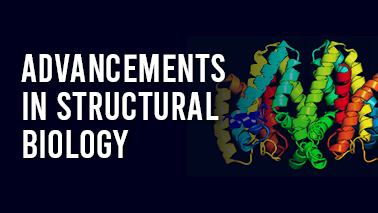
Structural biology is a rapidly evolving field, and numerous advancements have been made in recent years that are advancing our understanding of the structure and function of biological molecules. Here are a few examples of recent advancements in structural biology:
Cryo-electron microscopy (cryo-EM): Cryo-EM is a technique that allows for the determination of the 3D structure of large biomolecules, such as proteins and viruses, at near-atomic resolution. This technique has revolutionized structural biology in recent years and has led to the determination of many high-resolution structures.
X-ray free-electron lasers (XFELs): XFELs are a new generation of X-ray sources that generate ultrafast and intense X-ray pulses. This technology allows for the study of biomolecules in a range of different states, including in solution and under physiological conditions.
Hybrid methods: Hybrid methods combine different structural biology techniques, such as cryo-EM and X-ray crystallography, to provide more detailed and accurate structural information. These methods are becoming increasingly popular and are improving our ability to study large and complex biomolecules.
Membrane protein structures: Membrane proteins are important drug targets, but they are difficult to study using traditional structural biology techniques. In recent years, there have been significant advancements in the determination of membrane protein structures, which are helping to unlock new drug targets.
Integration with computational methods: Computational methods are increasingly being used in structural biology to complement experimental techniques. These methods can be used to predict the structure of proteins, to model the interactions between proteins and other molecules, and to simulate biological processes.
Overall, these and other advancements in structural biology are expanding our knowledge of the structure and function of biological molecules, and are paving the way for the development of new treatments for diseases.
Tags
Structural Biology Conferences
X-ray Crystallography Conferences
Molecular Biology Conferences
Computational Structural Biology Conferences
Cell Signalling Conferences
Protein Chemistry Conferences
Molecular Biology Conferences 2024
Proteomics Conferences 2024
Structural Genomics Conferences
Structural Bioinformatics Conferences
cryo-EM Conferences
Bioinformatics Conferences
Proteomics Conferences
Stereochemistry Conferences
Genomics Conferences
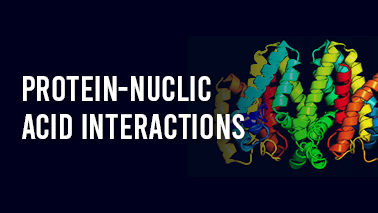
Protein-nucleic acid interactions are important for a wide variety of biological processes, including DNA replication, transcription, translation, and DNA repair. These interactions involve the binding of proteins to DNA or RNA molecules, and can be mediated by a variety of different protein domains and motifs.
Some examples of protein-nucleic acid interactions include:
DNA-binding proteins: DNA-binding proteins are a diverse group of proteins that recognize and bind to specific DNA sequences. These proteins often contain specific DNA-binding domains, such as helix-turn-helix, zinc fingers, or leucine zippers, that interact with the DNA through hydrogen bonding and electrostatic interactions.
RNA-binding proteins: RNA-binding proteins are proteins that bind to specific RNA molecules, often in a sequence-specific manner. These proteins can play a variety of roles in RNA metabolism, including mRNA processing, transport, and stability.
Transcription factors: Transcription factors are DNA-binding proteins that regulate gene expression by binding to specific DNA sequences in the promoter regions of genes. They can either activate or repress gene expression, depending on the specific transcription factor and the context of the DNA sequence.
Ribonucleoprotein complexes: Ribonucleoprotein complexes (RNPs) are complexes of RNA and proteins that are involved in a variety of processes, including translation and RNA splicing. These complexes often involve specific RNA-binding domains or motifs in the proteins, which interact with the RNA through hydrogen bonding and electrostatic interactions.
DNA repair proteins: DNA repair proteins are a group of proteins that recognize and repair damaged DNA. These proteins often contain specific DNA-binding domains or motifs that allow them to recognize the damaged DNA, and then recruit other proteins to carry out the repair process.
In summary, protein-nucleic acid interactions are essential for many biological processes, and involve the binding of proteins to specific DNA or RNA sequences. These interactions are often mediated by specific protein domains or motifs, and can be involved in gene regulation, RNA metabolism, and DNA repair.
Tags
Proteomics Conferences
Molecular Biology Conferences 2024
Computational Structural Biology Conferences 2024
Structural Genomics Conferences
X-ray Crystallography Conferences
Structural Bioinformatics Conferences
Protein Engineering Conferences
Computational Structural Biology Conferences
Cell Signalling Conferences
Genomics Conferences
NMR Spectroscopy Conferences
Mass Spectrometry Conferences
Protein Engineering Conferences
Protein Chemistry Conferences
Bioinformatics Conferences 2024
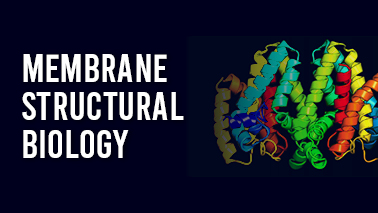
Membrane structural biology is the study of the structure and function of biological membranes at the molecular level. Membranes are thin, flexible sheets of lipid bilayers that surround cells and subcellular organelles, and are essential for maintaining cell integrity, signaling, and transport.
The structure and function of membranes are mediated by a variety of membrane proteins, lipids, and carbohydrates, which are embedded in the lipid bilayer.
Some of the key techniques used in membrane structural biology include:
X-ray crystallography: X-ray crystallography is a technique used to determine the three-dimensional structure of proteins and other molecules. This technique has been used to determine the structures of many membrane proteins, including ion channels and transporters.
Electron microscopy: Electron microscopy is a technique used to visualize the structure of biological samples at high resolution. This technique has been used to visualize the structure of membrane proteins, including G protein-coupled receptors and ion channels.
NMR spectroscopy: NMR spectroscopy is a technique used to study the structure and dynamics of molecules in solution. This technique has been used to study the structure and function of membrane proteins and lipids.
Molecular dynamics simulations: Molecular dynamics simulations are computer simulations that can predict the behavior of molecules at the atomic level. This technique has been used to study the structure and dynamics of membranes and membrane proteins.
Some of the key findings in membrane structural biology include:
In summary, membrane structural biology is a rapidly evolving field that aims to understand the structure and function of biological membranes and the proteins embedded within them. This knowledge is essential for understanding many biological processes, including cell signaling, transport, and membrane fusion.
Tags
Protein Chemistry Conferences
cryo-EM Conferences 2024
Genomics Conferences
Structural Biology Conferences 2024
Proteomics Conferences 2024
Structural Biology Conferences 2024 Europe
cryo-EM Conferences
Bioinformatics Conferences 2024
Molecular Biology Conferences 2024
Protein Engineering Conferences
Proteomics Conferences
Computational Structural Biology Conferences 2024
NMR Spectroscopy Conferences
X-ray Crystallography Conferences
Structural Genomics Conferences
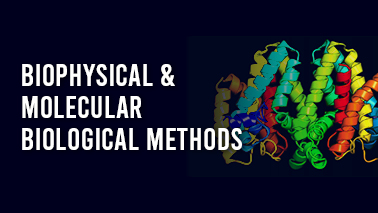
Biophysical and molecular biological methods are a set of experimental techniques used to study biological systems at the molecular level. These methods are widely used in fields such as biochemistry, biophysics, molecular biology, and structural biology, and are essential for understanding the structure, function, and interactions of biological molecules.
Some of the key biophysical and molecular biological methods include:
X-ray crystallography: X-ray crystallography is a technique used to determine the three-dimensional structure of biological macromolecules, such as proteins and nucleic acids.
Nuclear magnetic resonance (NMR) spectroscopy: NMR spectroscopy is a technique used to study the structure and dynamics of biological molecules in solution.
Mass spectrometry: Mass spectrometry is a technique used to determine the molecular weight and composition of biological molecules.
Fluorescence spectroscopy: Fluorescence spectroscopy is a technique used to study the interactions between biological molecules, and can provide information about molecular structure, conformation, and dynamics.
Circular dichroism spectroscopy: Circular dichroism spectroscopy is a technique used to study the secondary structure of biological molecules, such as proteins.
Electrophoresis: Electrophoresis is a technique used to separate biological molecules, such as proteins and nucleic acids, based on their size and charge.
Polymerase chain reaction (PCR): PCR is a technique used to amplify DNA sequences, and is widely used in molecular biology and genetics.
Cloning and recombinant DNA technology: Cloning and recombinant DNA technology are techniques used to manipulate DNA sequences, and are widely used in molecular biology and biotechnology.
These biophysical and molecular biological methods provide essential information about the structure, function, and interactions of biological molecules, and have led to many important discoveries in the fields of biochemistry, biophysics, and molecular biology.
Tags
Genomics Conferences
Molecular Biology Conferences 2024
Bioinformatics Conferences
Protein Engineering Conferences
cryo-EM Conferences 2024
Proteomics Conferences
Computational Structural Biology Conferences
Bioinformatics Conferences 2024
Protein Chemistry Conferences
X-ray Crystallography Conferences
Mass Spectrometry Conferences
cryo-EM Conferences
Structural Biology Conferences 2024 USA
Proteomics Conferences 2024
Structural Biology Conferences 2024
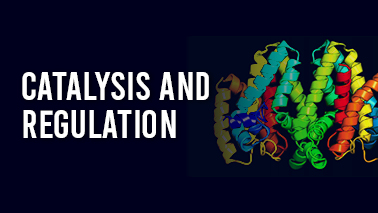
Catalysis and regulation are two important concepts in biochemistry and are fundamental to understanding how enzymes and other biomolecules function in living systems.
Catalysis refers to the process of increasing the rate of a chemical reaction by a catalyst, which is typically an enzyme or other biomolecule that lowers the activation energy required for the reaction to occur. Enzymes are proteins that act as catalysts in biological systems and are essential for many biochemical reactions in the cell. Enzymes work by binding to reactant molecules, or substrates, and facilitating their conversion to product molecules. Enzymes can be highly specific, recognizing only certain substrates and catalyzing only specific reactions. The activity of enzymes can be regulated by a variety of mechanisms, such as allosteric regulation, covalent modification, and proteolytic cleavage.
Regulation refers to the process by which biological systems control the activity of enzymes and other biomolecules. Regulation is important because it allows the cell to respond to changes in the environment and to coordinate its metabolic activities. Enzyme regulation can occur at various levels, including transcriptional regulation (regulation of gene expression), post-transcriptional regulation (regulation of mRNA stability and translation), and post-translational regulation (regulation of enzyme activity by modification of the protein itself). Examples of regulatory mechanisms include feedback inhibition, in which the end product of a metabolic pathway inhibits an upstream enzyme in the pathway, and enzyme induction, in which the expression of an enzyme is upregulated in response to a specific stimulus.
Together, catalysis and regulation are essential to understanding the biochemistry of living systems, and have important implications for the development of drugs and other therapies for human disease. By targeting enzymes and other regulatory molecules, scientists can develop drugs that selectively modulate the activity of these molecules and treat a variety of diseases, such as cancer, diabetes, and infectious diseases.
Tags
Proteomics Conferences 2024
Molecular Biology Conferences 2024
Protein Chemistry Conferences
Structural Biology Conferences 2024
Computational Structural Biology Conferences 2024
NMR Spectroscopy Conferences
Proteomics Conferences
Computational Structural Biology Conferences
Structural Bioinformatics Conferences
Stereochemistry Conferences
Mass Spectrometry Conferences
Protein Engineering Conferences
Cell Signalling Conferences
Protein Engineering Conferences
Structural Genomics Conferences

The objective of x-ray crystallography is to determine the three dimensional molecular structure from a crystal. A highly concentrated, pure material is crystallised and then subjected to an x-ray beam.
The objective of x-ray crystallography is to determine the three dimensional molecular structure from a crystal. A highly concentrated, pure material is crystallised and then subjected to an x-ray beam. The crystal scatters the X-rays onto an electrical detector, comparable to how a digital camera captures photos. The intensity of the dispersed X-rays are measured by a computer to determine the location of each atom in the crystalline molecule. The output is a computer image in three dimensions. This approach has been used to determine the structure of almost 85 percent of all known protein molecules. X-ray crystallography is currently the technique of choice for determining the structure of proteins and biological macromolecules.
Tags
Genomics Conferences
Structural Biology Conferences 2024 USA
Stereochemistry Conferences
Proteomics Conferences
X-ray Crystallography Conferences
Molecular Biology Conferences 2024
cryo-EM Conferences 2024
Protein Chemistry Conferences
Bioinformatics Conferences 2024
NMR Spectroscopy Conferences
Structural Biology Conferences 2024
Structural Genomics Conferences
Structural Biology Conferences
Structural Bioinformatics Conferences
Bioinformatics Conferences
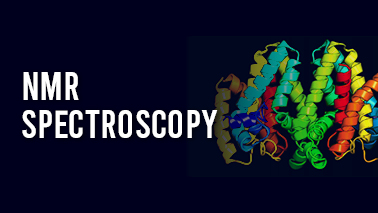
NMR spectroscopy is an indispensable tool that employs a magnetic field and radio frequency pulses to characterise the resonance frequency of an atomic nucleus in relation to its chemical or environmental surroundings.
NMR spectroscopy has become one of the most effective techniques for determining the structure, dynamics, reaction state, and chemical environment of molecules.
Tags
Cell Signalling Conferences
Protein Engineering Conferences
Bioinformatics Conferences 2024
Molecular Biology Conferences
Molecular Biology Conferences 2024
X-ray Crystallography Conferences
Structural Biology Conferences 2024 USA
Computational Structural Biology Conferences
Structural Bioinformatics Conferences
Genomics Conferences
Protein Engineering Conferences
cryo-EM Conferences
Structural Biology Conferences 2024 Europe
Structural Biology Conferences
Proteomics Conferences
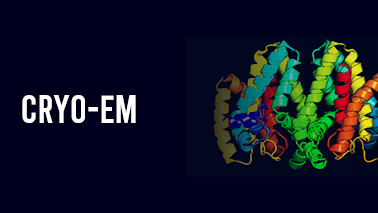
In cryo-EM, researchers rapidly freeze a cell, virus, chemical complex, or other structure to prevent the formation of ice crystals. This maintains the original status of the sample. An electron microscope is used by scientists to blast the frozen sample with an electron beam. This creates a projection of the sample in two dimensions on a digital detector. Scientists build a three-dimensional model of a sample's structure by generating hundreds of projections of the sample from a variety of angles and then averaging these projections. Recent breakthroughs in cryo-EM offer images of proteins and other biological structures, including bigger structures like RNA-protein complexes, in exquisite detail.
Tags
Protein Chemistry Conferences
Stereochemistry Conferences
Structural Bioinformatics Conferences
Proteomics Conferences
Mass Spectrometry Conferences
Molecular Biology Conferences
Structural Biology Conferences 2024 USA
Proteomics Conferences 2024
Computational Structural Biology Conferences 2024
cryo-EM Conferences
Bioinformatics Conferences
Structural Biology Conferences 2024
Structural Genomics Conferences
NMR Spectroscopy Conferences
Structural Biology Conferences 2024 Europe
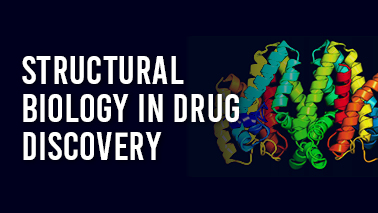
Structure-based drug discovery is now a full part of the pharmaceutical industry, and many companies use both high-throughput screening and fragment screening to find starting points for their small-molecule R&D programs.
Knowledge of the 3D structures of proteins has long been acknowledged as having the potential to expedite drug discovery, but recent advancements in genome sequencing, robotics, and bioinformatics have drastically altered the opportunities. Through genomic analyses and X-ray or NMR spectroscopy, numerous new protein targets have been found and examined. Structural biology has been essential in guiding not only lead optimization and target identification, where it has well-established responsibilities, but also lead discovery, now that high-throughput methods of structure determination may provide effective screening approaches.
Tags
cryo-EM Conferences 2024
Molecular Biology Conferences 2024
Structural Biology Conferences 2024 USA
Structural Biology Conferences
Proteomics Conferences 2024
Structural Genomics Conferences
NMR Spectroscopy Conferences
Protein Chemistry Conferences
Cell Signalling Conferences
X-ray Crystallography Conferences
Protein Engineering Conferences
Protein Engineering Conferences
Computational Structural Biology Conferences
Structural Biology Conferences 2024 Europe
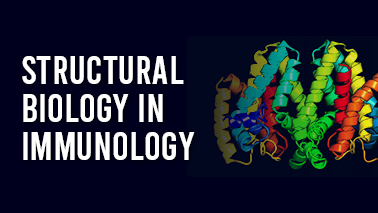
Structural biology can provide several insights in the field of immunology, including the discovery of pathogen and receptor/ligand structures, which can be utilised to rationally design therapeutics to prevent or treat infections.
Tags
Proteomics Conferences
Structural Biology Conferences 2024
Bioinformatics Conferences 2024
Structural Biology Conferences 2024 USA
Cell Signalling Conferences
Mass Spectrometry Conferences
Structural Biology Conferences
NMR Spectroscopy Conferences
Computational Structural Biology Conferences
Proteomics Conferences 2024
X-ray Crystallography Conferences
Bioinformatics Conferences
Computational Structural Biology Conferences 2024
Protein Chemistry Conferences
cryo-EM Conferences
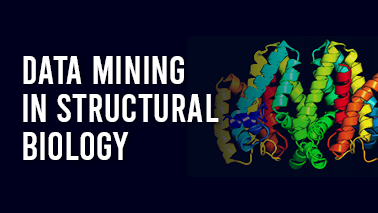
Data mining is the process of analyzing large datasets to discover patterns and relationships that can be used to make predictions or inform decision-making. In structural biology, data mining is used to extract insights from large collections of structural data, such as protein structures determined by X-ray crystallography or NMR spectroscopy.
One important application of data mining in structural biology is the identification of new drug targets. By analyzing the structures of proteins and other biomolecules involved in disease pathways, scientists can identify potential drug targets that may be amenable to small molecule inhibitors or other therapeutic interventions.
Data mining can also be used to identify structural motifs and other features that are important for protein function. For example, researchers may use data mining techniques to identify conserved amino acid residues in a protein structure that are critical for enzymatic activity, or to identify structural features that are involved in protein-protein interactions.
Another application of data mining in structural biology is the prediction of protein structures. While X-ray crystallography and NMR spectroscopy are powerful tools for determining protein structures, they are often time-consuming and technically challenging. As a result, researchers have developed a number of computational methods for predicting protein structures from sequence data. These methods rely on data mining techniques to identify structural patterns and relationships in large databases of known protein structures.
Finally, data mining can be used to analyze the dynamics of biomolecular systems. By combining structural data with molecular dynamics simulations and other computational techniques, researchers can gain insights into the conformational changes and other dynamic processes that underlie biomolecular function.
Overall, data mining is a powerful tool for analyzing and interpreting large datasets in structural biology. By combining computational and experimental methods, researchers can gain a deeper understanding of the structure and function of biomolecules, and develop new therapies for human disease.
Tags
Computational Structural Biology Conferences
Structural Biology Conferences 2024 Europe
Structural Biology Conferences 2024 USA
Mass Spectrometry Conferences
Structural Biology Conferences 2024
cryo-EM Conferences 2024
Cell Signalling Conferences
Molecular Biology Conferences
Stereochemistry Conferences
Protein Engineering Conferences
Computational Structural Biology Conferences 2024
Genomics Conferences
Structural Biology Conferences
Bioinformatics Conferences 2024
Structural Bioinformatics Conferences
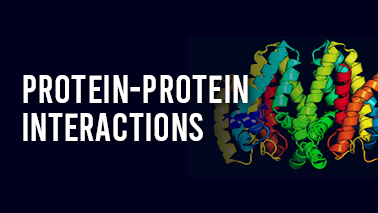
Protein-protein interactions are fundamental to many biological processes, such as signal transduction, gene expression, and metabolic regulation. Understanding how proteins interact with each other is therefore critical to understanding how cells function, and to developing new therapies for human disease.
There are several types of protein-protein interactions, including:
Enzyme-substrate interactions: Many enzymes catalyze reactions by binding to specific substrates and facilitating their conversion to product molecules.
Protein-protein recognition: Proteins often recognize each other through specific domains or motifs that interact with complementary domains on other proteins.
Protein-protein assembly: Many protein complexes are formed through the assembly of multiple protein subunits, which may interact through specific domains or through more diffuse interfaces.
Allosteric regulation: Some proteins are regulated by the binding of ligands or other proteins to sites that are distinct from the active site. This binding can lead to conformational changes in the protein that affect its activity.
Several techniques are used to study protein-protein interactions, including:
Yeast two-hybrid system: This method is used to identify protein-protein interactions in vivo by fusing two proteins to separate domains of a transcription factor. If the two proteins interact, the transcription factor is reconstituted, leading to expression of a reporter gene.
Co-immunoprecipitation: This method involves the use of antibodies to isolate a protein of interest, along with any interacting partners.
Surface plasmon resonance: This technique uses a biosensor to measure the binding of proteins in real time, allowing the determination of binding kinetics and affinities.
X-ray crystallography and NMR spectroscopy: These methods are used to determine the structures of protein complexes, allowing researchers to visualize the interactions between individual proteins.
Overall, protein-protein interactions are critical to many biological processes, and understanding their mechanisms and regulation is essential to developing new therapies for human disease.
Tags
Stereochemistry Conferences
Molecular Biology Conferences
Molecular Biology Conferences 2024
Protein Engineering Conferences
Structural Biology Conferences 2024 USA
Bioinformatics Conferences
Structural Bioinformatics Conferences
Cell Signalling Conferences
Proteomics Conferences 2024
Bioinformatics Conferences 2024
Mass Spectrometry Conferences
cryo-EM Conferences
Structural Biology Conferences 2024
Proteomics Conferences
cryo-EM Conferences 2024
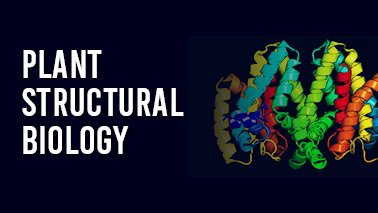
Plant structural biology is the field of biology that focuses on the study of the structural organization and function of plants at the molecular and cellular levels. This field integrates the principles and techniques of biochemistry, genetics, molecular biology, cell biology, and biophysics to understand the molecular and cellular processes that underlie plant growth, development, and adaptation.
The structural biology of plants involves the study of the three-dimensional structures of plant molecules and macromolecular complexes, such as enzymes, receptors, transporters, and structural proteins, and the mechanisms by which these molecules interact with each other to carry out specific functions in plant cells. This includes the study of the physical and chemical properties of plant macromolecules, such as their folding, stability, and dynamics, as well as their interactions with other molecules, including ligands, cofactors, and other proteins.
Plant structural biology also includes the study of the structural organization of plant cells, tissues, and organs, and how these structures contribute to plant growth, development, and adaptation. This includes the study of the cytoskeleton, cell walls, membranes, and organelles, such as chloroplasts and mitochondria, and how they interact to support plant physiology.
Plant structural biology is a rapidly evolving field, and it has important implications for agriculture, biotechnology, and environmental science. By understanding the molecular and cellular processes that underlie plant growth, development, and adaptation, researchers can develop new strategies for improving plant productivity, reducing environmental impact, and addressing global challenges, such as climate change and food security.
Tags
cryo-EM Conferences 2024
Molecular Biology Conferences 2024
Protein Engineering Conferences
Proteomics Conferences
Bioinformatics Conferences
Molecular Biology Conferences
Structural Biology Conferences 2024
Structural Biology Conferences
Structural Biology Conferences 2024 USA
Computational Structural Biology Conferences 2024
Structural Bioinformatics Conferences
Mass Spectrometry Conferences
NMR Spectroscopy Conferences
Stereochemistry Conferences
Structural Genomics Conferences
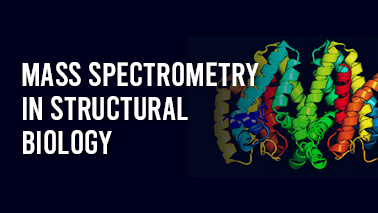
Mass spectrometry (MS) is a powerful analytical technique that has become increasingly important in structural biology. MS is used to determine the mass-to-charge ratio (m/z) of molecules in a sample by ionizing them and then separating the resulting ions based on their mass-to-charge ratio.
In structural biology, MS is often used to determine the mass and composition of proteins, nucleic acids, carbohydrates, lipids, and other biomolecules. This information can then be used to infer the molecular structure and interactions of these molecules.
One of the most important applications of MS in structural biology is the determination of protein structure. MS can be used to determine the molecular mass of intact proteins, which can be used to infer the presence and number of post-translational modifications, such as phosphorylation or glycosylation. MS can also be used to analyze protein fragments generated by enzymatic or chemical cleavage, and this information can be used to identify the amino acid sequence of the protein and to infer its three-dimensional structure.
MS is also useful for analyzing protein-protein interactions and protein-ligand interactions. MS can be used to identify proteins that interact with a given protein, or to identify ligands that bind to a protein of interest. This information can be used to understand the molecular mechanisms underlying protein-protein and protein-ligand interactions, and to design new drugs or other therapeutic agents.
Overall, mass spectrometry has become an important tool in structural biology, providing valuable information about the molecular structure and interactions of biomolecules. The continued development of new MS techniques and instrumentation is likely to lead to even more powerful applications in the future.
Tags
Stereochemistry Conferences
X-ray Crystallography Conferences
cryo-EM Conferences
Proteomics Conferences 2024
Protein Engineering Conferences
Molecular Biology Conferences
Mass Spectrometry Conferences
Genomics Conferences
Computational Structural Biology Conferences
NMR Spectroscopy Conferences
Cell Signalling Conferences
Structural Genomics Conferences
Protein Engineering Conferences
Proteomics Conferences
Structural Biology Conferences 2024 Europe
There are several reasons why someone should attend an Internal Conference on Structural Biology and Biochemistry:
Networking Opportunities: Attending a conference provides an opportunity to network with other researchers, professionals, and experts in the field of structural biology and biochemistry. These networking opportunities can lead to collaborations, job opportunities, and future research collaborations.
Stay Updated on the Latest Research: Conferences provide a platform to learn about the latest research and advancements in the field of structural biology and biochemistry. Attendees can attend presentations and talks by leading experts in the field, which can help them stay up-to-date on the latest findings and trends.
Share Your Research: Conferences also provide an opportunity to present your own research and get feedback from peers and experts in the field. This can help you refine your research and improve its impact.
Professional Development: Conferences often include workshops and training sessions that can help attendees develop their skills and knowledge in the field of structural biology and biochemistry. These sessions can provide valuable training in specialized techniques and tools that can be applied to research.
Exposure to New Ideas: Conferences bring together researchers from different backgrounds and disciplines, which can lead to exposure to new ideas and approaches. This can help attendees develop new insights and perspectives on their own research and the field as a whole.
Market Insights of Structural Biology in USA:
The market value of Structural Biology in the USA is significant, as the country is home to some of the leading research institutions, pharmaceutical companies, and biotechnology firms in this field. According to a report by ResearchAndMarkets, the structural biology market in the USA was valued at USD 591.7 million in 2020 and is expected to grow at a compound annual growth rate (CAGR) of 8.7% during the forecast period of 2021-2028.
The growth of the market in the USA is driven by factors such as the increasing prevalence of chronic diseases, rising demand for personalized medicine, and the growing adoption of structural biology techniques in drug discovery and development. In addition, the availability of government funding for research in this field is also contributing to the growth of the market.
The USA is home to some of the world's leading research institutions and universities, such as the National Institutes of Health (NIH), Harvard University, Stanford University, and the University of California, San Francisco (UCSF), among others. These institutions are conducting cutting-edge research in the field of Structural Biology, leading to new discoveries and breakthroughs in drug discovery and development.
Overall, the market value of Structural Biology in the USA is expected to continue to grow in the coming years, driven by factors such as technological advancements, increasing government funding, and rising demand for personalized medicine.
Market Insights of Structural Biology in Europe:
Structural Biology is a growing field in Europe, and it is contributing significantly to the region's research and innovation activities. According to a report by Allied Market Research, the European structural biology and molecular modeling market was valued at USD 839.45 million in 2020 and is projected to reach USD 1.21 billion by 2028, growing at a compound annual growth rate (CAGR) of 4.8% during the forecast period.
The growth of the market is driven by factors such as the increasing demand for new drug development, growing adoption of structural biology techniques in the biopharmaceutical industry, and advancements in technology. The region has a robust infrastructure for research and development, which is supporting the growth of the structural biology market.
The European Union is also actively investing in research and development activities related to structural biology through various initiatives and funding programs. For instance, the Horizon 2020 program has funded several projects related to structural biology and molecular modeling, with a focus on developing new therapies for a range of diseases.
In addition, many research institutions, academic centers, and biopharmaceutical companies are collaborating to develop new technologies and tools for structural biology research in Europe. This is leading to new discoveries and breakthroughs in the field, and is expected to further drive the growth of the market in the coming years.
Overall, the market value of Structural Biology in Europe is expected to continue to grow, driven by advancements in technology, increasing investment in research and development activities, and growing demand for new drug development in the biopharmaceutical industry.
Contact us now and we will make your event unique & unforgettable
All numbers indicates percentage %
Europe
North America
Middle East
Asia Pacific
Africa
All numbers indicates percentage %
Structural & Molecular Biologists
Biotech & Pharma Researchers
Chemists & Biochemists
Biologists, Biomedical Researchers
Academicians & Faculty
Research Labs & Institutes
Graduate Students & Postdoctoral Researchers
Pharma, Biotech Industries and Companies
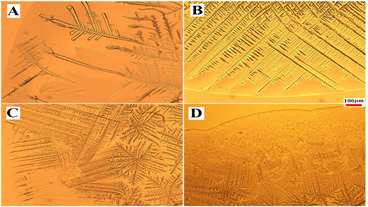
The studies on the dendritic crystallization of biological solutions are significant for medical applications. This manuscript reports our systematic study on the solution dendritic crystallization as a function of temperature, pH value, and the concentrations of its major components. And the factors that cause the variation in
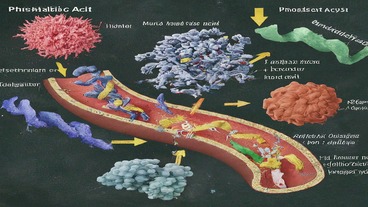
mTORC1, the mammalian target of rapamycin complex 1, is a key regulator of cellular physiology. The lipid metabolite phosphatidic acid (PA) binds to and activates mTORC1 in response to nutrients and growth factors. After reviewing structural findings, we propose a model for PA activation of mTORC1. PA binds a highly conserved se

RAS proteins work as GDP–GTP binary switches regulating cytoplasmic signalling networks and playing an essential role in turning on genes involved in cell growth, differentiation and survival and participating in about 30% of all known cancers [1]. Identifying anti-RAS therapeutic strategies is crucial for cancer treatments, b
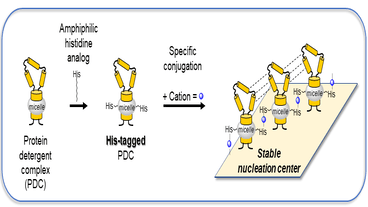
We present a new concept for crystallization of integral membrane proteins. Our working hypothesis relies on the assumption that by conjugating-micelles containing the target membrane protein, one would bring the latter into proximity and stabilize nucleation centers that would support crystal growth. Micellar conjugation is ac
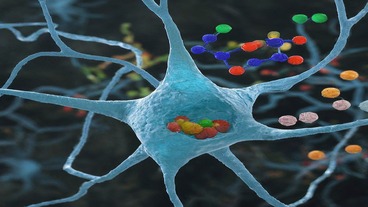
The rapidly increasing prevalence of Alzheimer's disease (AD) poses a significant global public health threat. While medications such as Donepezil, Galantamine, and Rivastigmine are used, their serious side effects and limited healing fail to provide a definite cure. Consequently, combination therapies are being explored to enha
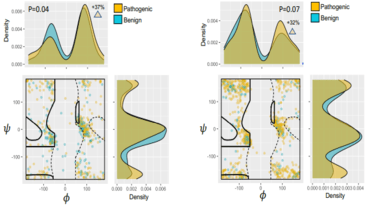
The role of glycyl residues in the protein structure has lingered within the research community for the last several decades. Glycyl residue is the only amino acid that is achiral due to the lack of a side chain and can, therefore, exhibit Ramachandran conformations that are disallowed for L-amino acids. The structural and funct











